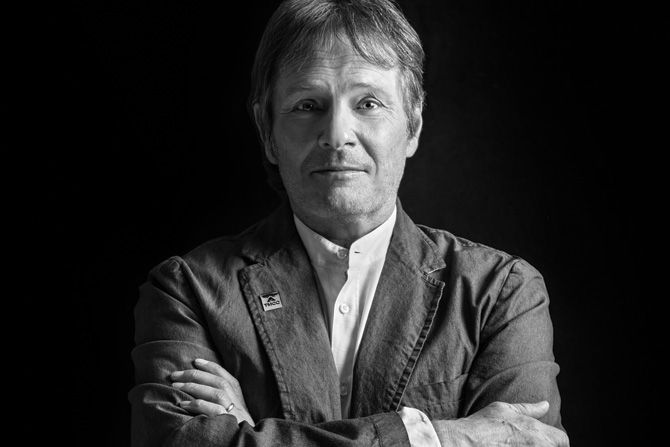Kreg Mebust serves as the Interim Dean of Technical Sciences at Truckee Meadows Community College. He is also a tenured faculty member at TMCC, teaching in the programs of Architecture, Residential Design, Landscape Architecture and Construction Management. He is professionally licensed as Landscape Architect and Residential Designer and has over 30 years of private industry experience. Most notable sustainable built projects include Cabela’s Retail Outlet featuring Low Impact design standards, Verdi, NV and the landscape and aesthetic treatments for the Carson City Freeway.
He guided TMCC’s efforts to become the first Community College in the State of Nevada to win the Green Ribbon School award from the U.S. Department of Education and leads many sustainable efforts for Truckee Meadows Community College. Additionally, Kreg recently developed TMCC’s first five-year Bachelor of Architecture program currently accepted as eligible for candidacy by the National Architectural Accrediting Board (NAAB).
Tell us about yourself.
At heart, I am an artist. I love the field of a blank canvas and the process of creativity that leads to a concluding statement. I enjoy the aspect of researching my subject matter and the friendships developed along the way. It is often the process that brings joy rather than the conclusion. I pause and reflect upon the creation, learn from it, and then move on to the next project. I live in a self-created world of opposites, appreciating both sadness and joy.
Why did you go into the architectural field?
I enjoy the aspects of problem-solving and finding a place where curiosity is the centerpiece.
What makes the architectural program at TMCC stand out?
TMCC stands out for many reasons:
- We will be the first BArch program in Nevada and the first Community College in the United States to offer said degree pathway.
- We are about providing access to an affordable, high-quality education that serves underserved populations. TMCC’s student population mirrors the cultural diversity found in Reno, NV. In turn, our students are the future of change, innovation and caretakers of our cultural tenets.
- TMCC’s program will focus on regional climatic issues in mountainous/high-desert environments. Areas of study include the interface between urban developments and wildland fire interface, sedimentation impacting our waterways, fragile alpine ecosystems, scenic qualities found at Lake Tahoe, etc.
- TMCC’s upper division courses will be taught primarily by practicing architects found locally. Our mission is simple:
1. Affordable education
2. High-quality education
3. Fastest pathway to obtain licensure
4. Ready to enter the workforce
- TMCC’s upper division courses will be taught primarily by practicing architects found locally. Our mission is simple:
Why academics in architecture rather than just plain architecture?
In theory, architecture has no ceiling. We must create learning spaces where our next generation of architects can solve “living problems.”
From your first year teaching to now, how have the students changed?
I see a consistent theme; they care about the environment and the community they call home. Students want to make a difference.
What is your favorite architectural style? Why?
Architecture should inform and teach. We should be able to learn by looking and analyzing rather than reading the concept statement.
Who inspired you? How?
My father was a professor and surgeon of Urology. He taught me to care about humanity and the sacred mantle of imparting knowledge.
If you and your students were to design a building, what type would it be?
A few years ago, our students designed and built a prototype tiny home for the City of Reno. It profoundly moved the students emotionally because they were creating a space for tenants who were close to the same age as they were. Many students could identify with the stories that surfaced from the homeless.
How has teaching made you a better architect?
If you think you know your craft, try teaching it. If you want to reach elementary students and learn about architecture, try writing and illustrating a children’s book. You have to process the magnitude of information out there and distill it down to digestible morsels of information.
Throughout my years of teaching, I have never been so challenged and inspired by the questions and curiosity found in the classroom. Our job as professors is to give students the tools upon which they can express their voices. Not to alter them, but to allow them to express what they have seen and experienced. Each student is unique and individually needed to help shape our future. I am confident that heady topics such as climate change can and will be solved in our classrooms. Our students give me hope.








